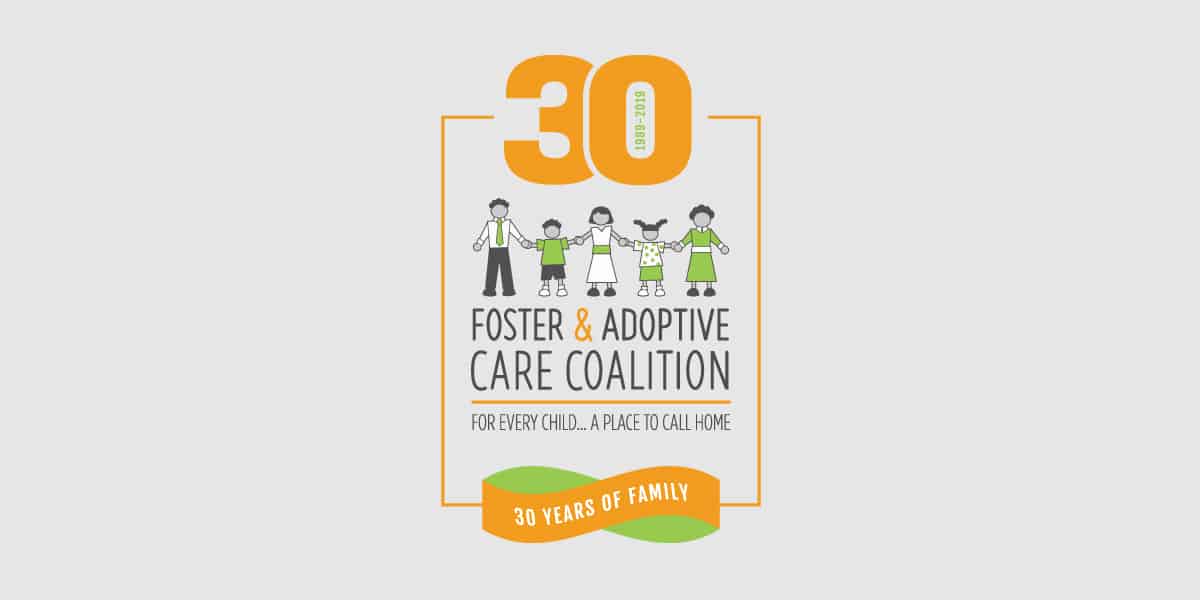“What began as a handful of reform-minded dreamers is now a cutting-edge leader in policy and practice. 30 years in, our groundbreaking and data-driven work has created dramatic change in the lives of our region’s most vulnerable children.”
In the late 1980s and early 90s, the United States was gripped by a drug epidemic. Cheap, readily available crack cocaine created a crisis in communities already wracked by rising poverty and homelessness. Children in those communities were the hardest-hit. Soon, there were more children in foster care than there were parents to care for them. Many spent their entire childhoods in the system, “aging out” of foster care at 18 to face harrowing rates of unemployment, homelessness, and incarceration.
As this epidemic grew, a pioneering group of social workers and foster and adoptive parents gathered to start a new organization dedicated to keep kids from falling through the cracks. They came from all corners of child welfare, and in 1989, with the mission to find a family for every child in foster care, they formed the Foster Care Coalition of Greater St. Louis (now known as Foster & Adoptive Care Coalition.)
What began as a handful of reform-minded dreamers is now a cutting-edge leader in policy and practice. Thirty years in, our groundbreaking and data-driven work has created dramatic change in the lives of our region’s most vulnerable children. Because the Coalition is funded by private individuals and foundations, we have the freedom to innovate and test new strategies. Our community partners have come to rely on the Coalition for help with their most challenging cases. Policymakers at the state and, increasingly, the national level have identified our team as the experts to call in the face of complex child welfare challenges.
Early on, the team realized that many agencies duplicated services, wasting resources and dispersing expertise. With startup funding from a United Way Venture Grant in 1991, the Coalition began to identify and fill gaps in community services. By focusing on unmet needs, our highly independent, issue-focused teams could make a radical difference in outcomes in specific areas, while simultaneously setting the bar higher for others.
One example is our Educational Advocacy team. Launched in 2007, it is still the only foster-focused team of Educational Advocates in the country. Without intervention, children in foster care graduate high school at less than half the rate of their peers, and only 3% will graduate college. The Coalition’s team of lawyers and former teachers partner with schools to educate teachers and administrators about the unique needs of children impacted by foster care, and tirelessly advocate for their rights.
In 2008, the Coalition launched Extreme Recruitment®, a new approach to an intractable problem. For decades, older youth, sibling groups, and children with special needs had languished for years in foster care. Extreme Recruitment® took the unprecedented step of pairing private investigators with highly-trained social workers. By finding hundreds of family members, our team not only increased the odds of adoption, they found relatives to help with childcare, transportation, and respite care. Requests for help from our community partners exploded, and Extreme Recruitment® was even featured in TIME Magazine.
In 2011, the Coalition created 30 Days to Family®, applying lessons learned from Extreme Recruitment® to children just entering foster care. Decades of research showed that kids do better when placed with safe, appropriate relatives. Within a few years, the program was recognized for its unmatched outcomes, and the New York Times featured the Coalition for its innovative work developing 30 Days to Family®.
In fact, with support from our donors, the Coalition commissioned an independent, third-party study of the program. The results were stunning. Children served by 30 Days to Family found family quicker, spent less time in institutions, and were significantly less likely to be forced to move.
This work has become critical since the start of the opioid epidemic. In the last five years, the number of children entering foster care in St. Louis City has increased by 34%, and in the County by 29%. In the last 10 years there has been a 538% increase in babies born addicted to drugs.
Today, the Coalition’s groundbreaking work is being replicated in more than 20 sites around the country, including the rest of Missouri, Ohio, Virginia, New York, and Washington D.C. Our commitment to transparency, accountability, and rigorous self-improvement has made us a model for countless other agencies who want to do better on behalf of kids. As foster and adoptive care has become more family-focused and data-driven over the last 20 years, the Coalition has led that movement here in St. Louis. In 2018, the Coalition even won a prestigious innovation award from the internationally-renowned Council on Accreditation.
Our vision is that every child in our community has a place to call home, a family with whom they can grow and heal. But our team cannot realize that vision alone. Abuse and neglect, addiction and poverty – these scar our children but do not condemn them. Not when there are people willing to step up to say that every child, no matter their trauma, no matter their race or gender, deserves a family. Without that, the last 30 years would not have been possible. Because of that commitment, we cannot wait to see what the next 30 years have in store.
